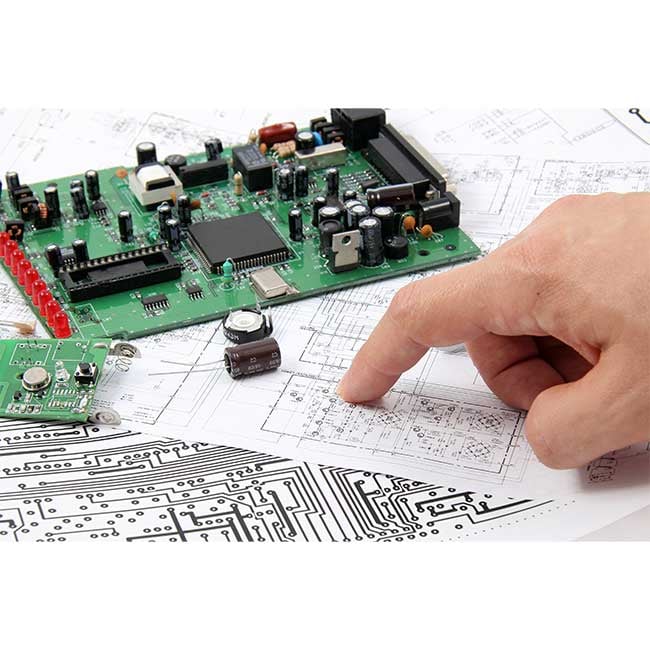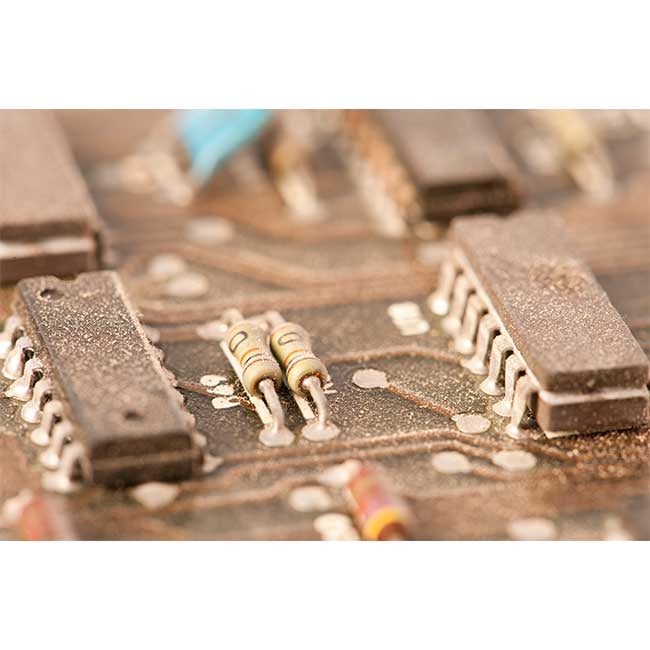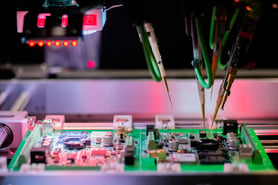Flying Probe PCB Testing: A Practical Guide to Reliable Results
There’s no perfect playbook to establishing and maintaining major transportation projects like...
The testing methods and investigation of each failure are adapted and improved upon regularly. Here we share details on the various classes of electronics and a variety of PCB testing methods. This guide is intended to provide an accurate and informative collection of this information.

The categories reflect the level of quality of each circuit board type, from lowest (Class 1 standards) to highest (Class 3 standards). This classification system was developed and is monitored by IPC under the IPC-6011 standard.
Perhaps the major difference between each class is the degree of inspection electronics assemblies must undergo and the quality standards to which they're subjected.
Understanding the classes and their requirements can be helpful to OEMs who aren’t sure to which class their product should belong. Factors like customer requirements and cost can weigh heavily in deciding which class to pursue.

The first electronic products class is referred to as the “general electronics” category. This class includes boards with the lowest quality requirements and is mostly found in products with an expected short life cycle.
This is basically the “you get what you pay for” class. These electronics are held to the lowest standard of quality and thus are usually found in inexpensive, high-volume productions.
Class 2 electronic devices encompass all electronics where continued performance and an extended life cycle are required -- to a point. Uninterrupted service is desired, but not critical. Along with what's in the chart above, IPC Class 2 examples include:
In other words, these are items where an early life cycle failure would have you red-faced and frustrated, but wouldn’t put your life at risk.
The third class of circuit boards is subject to strict guidelines due to their importance in the field. Class 3 electronics are typically mission-critical products.
Whether it’s a pacemaker or a military radar, a product that needs to meet IPC Class 3 requirements must use high-reliability electronic components to ensure uninterrupted service.
These electronics are usually the highest of quality, and many OEM products that could pass as Class 2 opt for the IPC Class 3 standard because the benefits of higher-quality electronics outweigh the cost of additional testing and inspection.

A variety of issues can occur during design and manufacturing, such as:

Environmental factors, such as extreme heat, dust, and moisture, can lead to failure. Electrostatic discharge during assembly is another common issue that results in premature failure of the circuit board. Human error and an accidental drop can also cause failure.

Stopping age-related failures is a bit more difficult, and it comes down to preventative maintenance more so than repair. However, if a part does fail, instead of tossing out the entire board, it can be more cost-effective to replace old parts with new ones.
PCBs fail. It’s going to happen. The best strategy is to do everything you can to avoid a repeat.
Performing a printed circuit board failure analysis can pinpoint the exact problem with the PCB and helps prevent the same problem from plaguing other current boards or future boards. These tests can be broken up into smaller tests, including:
Microsection analysis is a destructive test. So it’s performed on a sample of PCBs, not the entire manufacturing run.
The test allows evaluation of the plated through-holes and the lamination. It also examines a part of an assembled PCB for problems such as such as:


PCB processing and assembly (should) take place in a squeaky-clean environment designed to keep the air and components clean. Contamination is one of the most common causes of component failure.
The following are tests to combat this interference:
X-ray testing can check elements that are usually hidden from view, such as connections and ball grid array packages with solder joints underneath the chip package.
During this test, an X-ray technician is able to locate defects early during the manufacturing process by viewing:

PCB assembly testing methods are an integral part of the manufacturing process. Reputable electronics contract manufacturers (ECMs) offer a variety of PCB testing methods, but the seven main types include:

In-circuit testing (ICT) is the most robust type of PCB testing.
An ICT, also known as a bed-of-nails test, powers up and actuates the individual circuitry on the board. In most cases, the test is designed for 100% coverage, but you’ll get closer to 85-90% coverage (totally free of human error).
ICT is often performed on bigger connections and ball grid arrays (BGAs).
This test is for a “mature” product with very few revisions expected.

Flying probe testing is a tried-and-true option that’s less expensive than in-circuit testing. It’s a nonpowered type of test that checks for:

The test works through the use of needles attached to a probe on an x-y grid obtained from basic CAD. Your ECM program coordinates to match the circuit board and then runs the program.
In some cases, ICT makes it unnecessary to use flying probe testing, but the PCB has to be designed to fit with the test fixture -- which means a higher initial cost. While flying probe testing can be cheaper initially, it may actually be less cost-effective for large orders.
One final word of caution: A PCB flying probe test does not power up the board.

AOI uses either a single 2D camera or two 3D cameras to take photos of the PCB. The program then compares the photos of your board to a detailed schematic. If there is a board that does not match the schematic to a certain degree, the board is flagged for inspection by a technician.
AOI can be useful for detecting issues early to ensure production is shut down ASAP. However, it does not power up the board and may not have 100% coverage for all part types.

As the name suggests, burn-in testing is a more intense type of testing for PCBs. It’s designed to detect early failures and establish load capacity. Because of its intensity, burn-in testing can be destructive to the parts being tested.
This is done by running a power supply through the electronics at an elevated temperature, often its maximum-specified capacity.
Electronics have a higher failure rate at the beginning of their life cycle, leveling out in the middle and rising again as they reach the end of the life cycle. If a PCB with an infant mortality failure like this were to make its way into military or medical equipment, it could result in a potentially serious failure.
Burn-in testing reduces the number of latent defects by triggering them through this testing, resulting in a more reliable batch of electronics for the OEM, the trade-off being a smaller yield and potentially reduced product lifespan.
The data collected through this process can in turn help engineers understand what caused the defects and modify the design to improve product reliability before it even hits burn-in.


Also referred to as AXI, this type of “testing” is really more of an inspection tool, at least for most ECMs.
There are 2D and 3D AXI tests, with 3D offering a faster testing period.
X-ray testing checks elements that are usually hidden from view, such as connections and ball grid array packages with solder joints underneath the chip package. While this check can be very useful, it does require trained, experienced operators.

There are customers who do like a good, old-fashioned functional test. Your ECM uses this to verify that the product will power up.
This test does require a few things:
External pieces of equipment
Fixtures
Requirements for UL, MSHA, and other standards.
This functional test and its parameters are usually provided by the customer. Some ECMs can help develop and design such a test.
It does take time. If you want to get your product out the door quickly, this may not be your best choice. But from a quality and longevity standpoint, functional testing can save face and save money.

There are other types of functional tests that can be used to check your PCB, depending on the circumstances.
A PCB functional test verifies a PCB’s behavior in the product’s end-use environment. The requirements of a functional test, its development, and procedures can vary greatly by PCB and end product.
Other PCB assembly testing types include:
Evaluating solderability will tell your PCB tester whether or not the attached components, like leads and terminations, can withstand the scorching temperatures that come with soldering.
It also determines whether storing these components has adverse effects on their ability to solder to the PCB when putting them to use. Understanding the solderability of components and the board can minimize PCB failures and improve final product quality.
Three of the most common solderability testing formats are:
Dip and look subjects the leads and terminations to up to 8 hours of steam conditioning, accelerating the aging process. (This is why skin doctors warn against saunas and hot showers!)
Next, testers dip the components into solder using activated rosin flux. Finally, they’re inspected to ensure they meet requirements.
The surface mount simulation test is available for all surface mount technology (SMT) components, including ones that can’t use other types of PCB testing methods such as dip and look.
A specific solder paste is screen-printed onto a ceramic plate. The component then goes into the paste and is subjected to a convection reflow profile.
Wetting balance analysis also ages the components to measure the wetting forces.
The testers plot the wetting force, starting at negative (non-wet).
Solderability is measured as the amount of time it takes for wetting to occur.

is intended to reduce the number of failures once the product is in the hand of the consumer. In order to understand the various classes of electronics and the methods of testing used for each, consider downloading our resource.
There’s no perfect playbook to establishing and maintaining major transportation projects like...